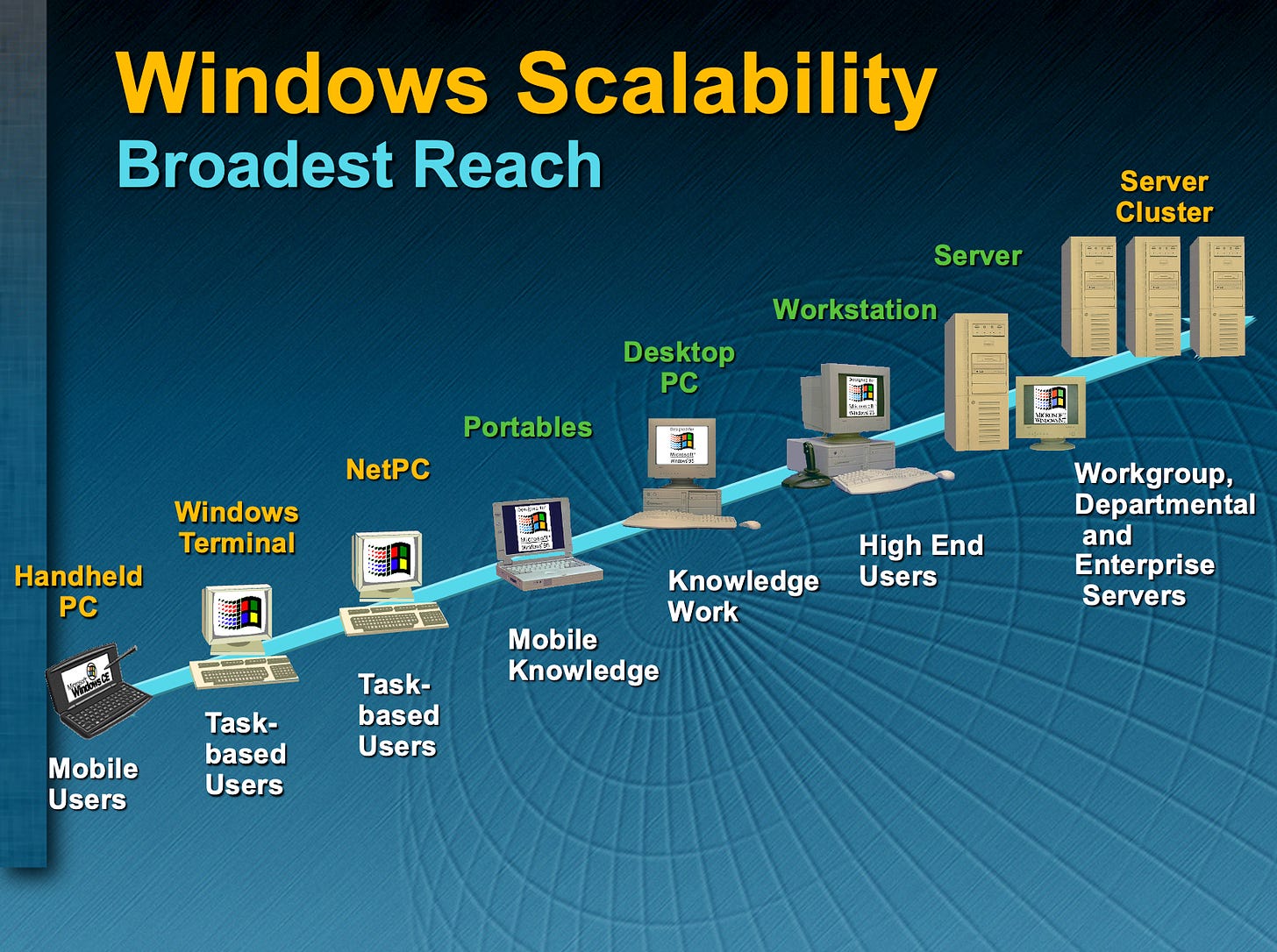The brass ring of product development is to create a platform. I say brass ring because by and large creating a platform is elusive for most products, at least at the scale we tend to think of when we think of platforms (Windows, iPhone, AdWords, and so on). In reality when, we look around there are tons of examples of platforms that deliver massive economics and powerful gains for those that bet on the platforms as customers and third parties.
While we all want to create a technology platform, we lack a common taxonomy or definitions. Once we have that definition, we can also look at the patterns that lead to the rise and fall of platforms.
The organization of this essay is as follows:
- What is a Technology Platform?
- A note on economics…
- Models of Platforms
- A note on stickiness/switching costs…
- Why do platforms fail at launch?
- A note on failing to consider all the 4 Ps…
- Why do platforms succeed?
- A note on platform moats…
- The Platform Lifecycle
What is a Technology Platform?
The simplest definition of a platform is a technology that serves as an ingredient for the success of others but is so important that it achieves recognition and a market position on its own. The market position is such that there are many attempting to offer the same complete product or service, but the platform defines the not-so-secret ingredient upon which most, or even all, of the end-products or services rely.
Limiting the discussion to relatively modern business, one of the earliest examples of a platform strategy was undertaken at General Motors (GM) with the advent of automobile product lines. Within GM in the 1950s and later, what started out as efficiency in supply chain procurement turned into a go-to market strategy. By relying on common assemblies and other subsystems of cars while differentiating on branding and option choices, GM created the illusion of serving many more customers with cars uniquely tuned to specific customer segments. This eventually led to separate businesses based on a common platform, for example the Camaro, Firebird, and Trans-Am were very different customers for mostly the same car. An eye-opening list of just how far this platform strategy went can be found on the list of GM platforms.
Deliberately platformizing (my word) an existing product and attempting to reuse it over and over again is something that incumbents do once they achieve success. OREO cookies or Hershey chocolate appear in a dozen different aisles in supermarkets. Clorox bleach-based products fill an entire aisle. In toys and entertainment, from Barbie to Star Wars we have seen these platforms expand. Thus, the Disney Corporation today is one of the great executors of a platform strategy.
Historically in software, Windows attempted this strategy with a notion of the Win32 API serving as the basis for the strategy. As did Java, with the virtual machine at the core of an expansive platform. Both of these serve as cautionary tales when it comes to a deliberate expansion of a platform strategy.

While those behind strategies above are lauded, it is hard to escape how much of the success is execution compared to creation. The most interesting platforms emerged not from the deliberate expansion by an incumbent or even building a product with the explicit desire to be a platform. Rather the biggest and most successful platforms simply started out as trying to solve a problem.
The key is that the solution was obvious to at least a small set of people and it delivered an immediate win. This small set of people are not always what we think of as builders or software developers but are simply users.
Perhaps the most ubiquitous modern productivity tool is the spreadsheet which at first did not seem to be a platform but was “just an app” or even a “killer app [for a platform]” but definitely not a platform itself. Over time spreadsheets added programmable macros and even very complex add-in architectures requiring professional programming, but compared to just using a spreadsheet these tasks did not dominate. Still, the spreadsheet is a platform. It serves as a foundational ingredient for the whole of finance, consulting, science, and more broadly analysis, not to mention tracking everything in most every job category. Today, people engineer work processes around spreadsheets baking them into final goods and services.
Sometimes a platform emerges from an internal technology like the ones created by GM to become a new platform on its own. Adobe PDF represents a journey to ubiquity. In the earliest days, PDF was derived from Adobe’s own PostScript format to be a platform for publishers to use. Faced with the challenge of “converting” any variety of native formats to this format, the idea of printing to PDF ended up creating a universal document viewing format. In 2008, Adobe offered an open standard for the format solidifying its ubiquity albeit giving up much of the monetization. Today, PDF is an essential part of the workflow for nearly every official transaction and serves as the foundation for paperless signatures in nearly every work process. It is a platform without massive platform economics. Another lesson.
The web, HTTP and HTML and associated technologies, serve as the canonical example of a platform open and free from the start. It should also serve as an example of a platform taking on vastly more use cases or scenarios than when first envisioned as a way to share documents online. Much like the core internet technologies upon which it is based (namely TCP/IP, DNS, etc.) the ability for web technologies to scale and morph to support ever more and create the platform of our age is truly remarkable. There is a great lesson in this platform on the importance of architectural principles that underly robust and durable technology platforms. The Unix operating serves as another example of architectural choices for a platform that have endured.
With so many unique examples it becomes increasingly difficult to classify them. A most interesting thing is we remember platforms as well-defined and intentional entities and often attribute their success to a platform strategy. But often a platform strategy is one that emerged organically seeing how products are used or is the result of a very tight retroactive construction. Most successful platforms begin life as one set of scenarios and that success leads to using the technology for tasks that even the originators did not envision. While that is taking place the influence of competitors and introduction of new technologies nudge and bump the platform in directions not originally intended as well. In fact, that very evolution is an essential element of most successful platforms.
Thus, any description of a single platform works only for a point in time. The evolution and management of the platform becomes even more critical than the original designs and model.
Seguir leyendo: Hardcore Software


